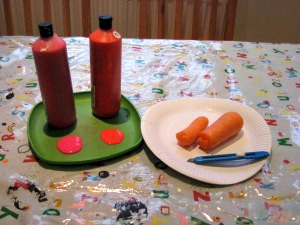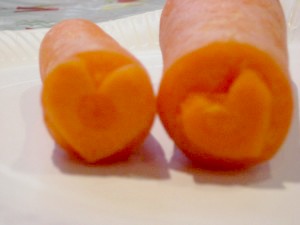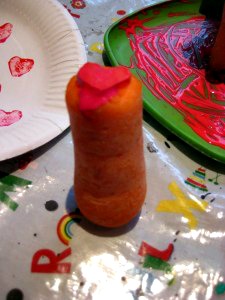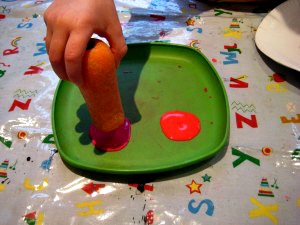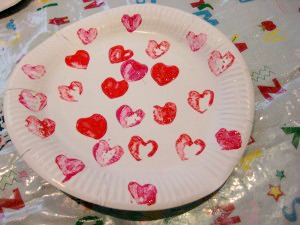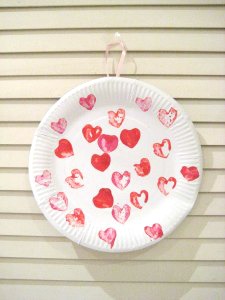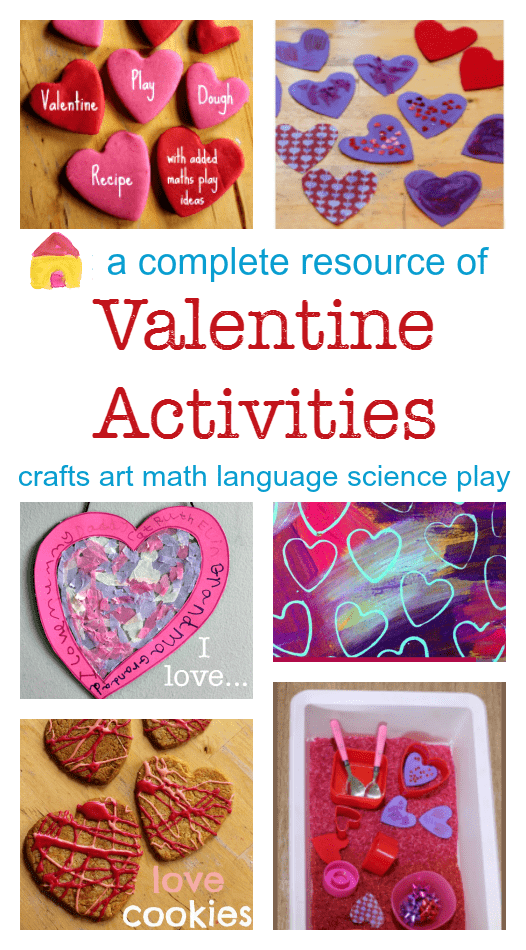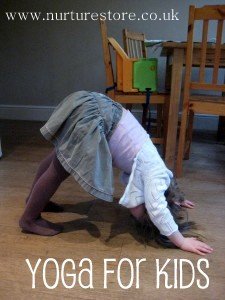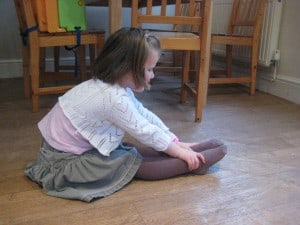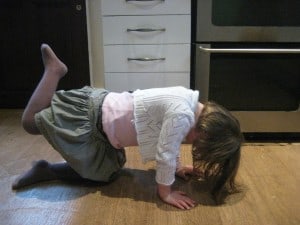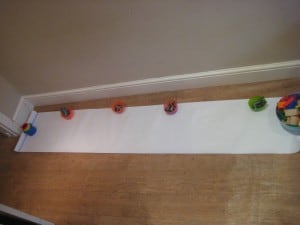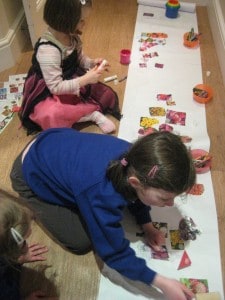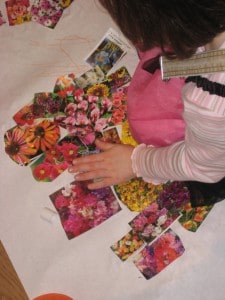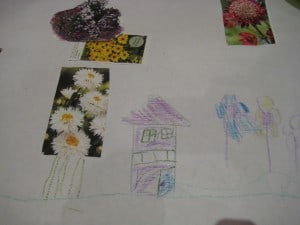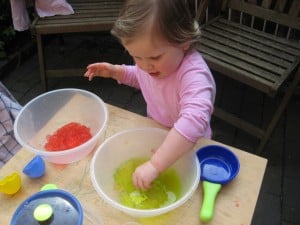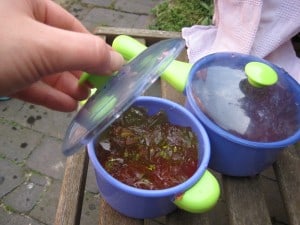Valentine craft :: carrot printing
February 14th is nearly here so we’re starting on our Valentine crafts with this carrot printing picture. It’s a simple craft for young children to try out, so long as they’re old enough to understand that this carrot isn’t to go in their mouth. You may have tried potato printing before but I find carrots are easier for little hands to grip.
You will need: a paper plate, some red and pink paint, a plate to put the paint on, a carrot, a craft knife or a kitchen knife with a sharp point, a ribbon and some sticky tape.
Cut the carrot in half and etch out a heart shape. A grown-up needs to do this part of course, but it’s fairly easy – I managed it! We did a small heart on one piece of carrot and a big heart on the other but you could do a cross shape for a kiss too.
If you level off the other end of the carrot you’ll be able to stand it upright when you’re not using it.
Put some paint on your plate and dip your carrots in.
Print out your hearts on to the paper plate.
Keep going using the red and pink paints until your artwork is complete.
Add a ribbon on to the back using sticky tape and hang your decoration for all to admire – or give as a present to the one you love.
More lovely Valentine’s Day activities for your children
Did you see all my other Valentine’s Day activities for children? I’ve got more free printables, art, math, science, literacy and play ideas, all with a Valentine theme. You can find them all here.
Yoga for kids
Yoga is a wonderful activity for young children. They are naturally flexible and you often see them in poses a yoga follower would recognise from their practice. The picture above shows a position my daughter adopts frequently. Any yoga fans would recognise it as a Downward Dog but to my daughter it’s just a natural way to move her body.
Practising yoga with children should be like any play with them – with the emphasis on having fun. Little Lotus Yoga had a photo album of poses on their facebook page which you could try out, as we did today. We put on some music to create a peaceful environment and then simply had a try. My daughter loved it – she was giggling throughout!
We also have a favourite book called ‘My Daddy is a Pretzel’ which introduces different poses to children through a story where a group of children talk about what jobs their parents do.
From the yoga classes I’ve attended I’ve learned that anyone can do yoga – it’s about trying the poses and seeing how your body responds, not about comparing yourself with anyone else or having any specific expectations of what you ‘should’ be able to do. Yoga with children can help maintain their flexibility, and it can also help develop physical strength. It can help to calm children too, so could make a lovely addition to a bedtime routine. Why not give it a try?
Landscape garden art
We’ve just finished ordering seeds for the garden ready for the Spring (roll on!) and so have a few seed catalogues lying around. Rather than put them straight in the recycling bin we were inspired to make a garden landscape picture.
We used a long roll of white paper, but the back of an old roll of wall paper would be a good alternative.
With four artists at work we set up 4 stations along the roll with crayons and glue sticks. The older children went through the catalogues and cut out lots of the flower illustrations and then everyone set to work. The younger children enjoyed using the glue to stick on a bright collage of flowers.
The older ones concentrated on adding their own illustrations, with lots of talk about hanging baskets and mini beasts.
Like this idea? How about using a roll of paper to make a street map or a life sized picture of your child?
Jelly / Jello sensory play
Messy play is a wonderful way for children to explore their senses and there are lots of materials you can use. With younger children you must always be aware of course that whatever they are playing with is guaranteed to end up in their mouths – so shaving foam or playdough is no good for the littlies. Children explore so much with their mouths that there’s no point trying to stop them, but instead you can provide a material that it’s safe for them to use. So what better than some jelly!
You can easily get hold of jelly which is made with natural food colouring. With babies you can start with just one colour. I usually pop on a cover-all bib and sit them in their highchair at the table. I put a mound of jelly on the highchair’s tray and then let them go for it. Watch them poke, squish and taste. Chat to them while they play and give them new words to try like wobble and squash. You could sing ‘Jelly on a Plate’ while you play.
With toddlers and pre-schoolers you can use 2 or 3 different colours of jelly and see what happens when you mix them together. This is a fun first lesson in colour combining, as you watch red and yellow jelly turn into orange. Let the children help you prepare the jelly so they can observe how it changes from solid to liquid and back to solid again.
Sometimes children can be reluctant to try new sensory experiences and may not want to touch the jelly. To overcome this and encourage them to experiment you could have a jelly lucky dip by hiding a few tempting treasures at the botton of a bowl of jelly for them to fish out.
You can also add props such as pans, plates and spoons to role play a kitchen or cafe. Spooning the jelly out onto plates is good hand-eye co-ordination practice.
This post is happily shared with weareTHATfamily in the Works For Me Wednesday carnival.

Train inspired pre-reading and maths puzzles
These two ideas wrap up our week of trains, trains and more trains.
Idea One is to make a Sorting Train.
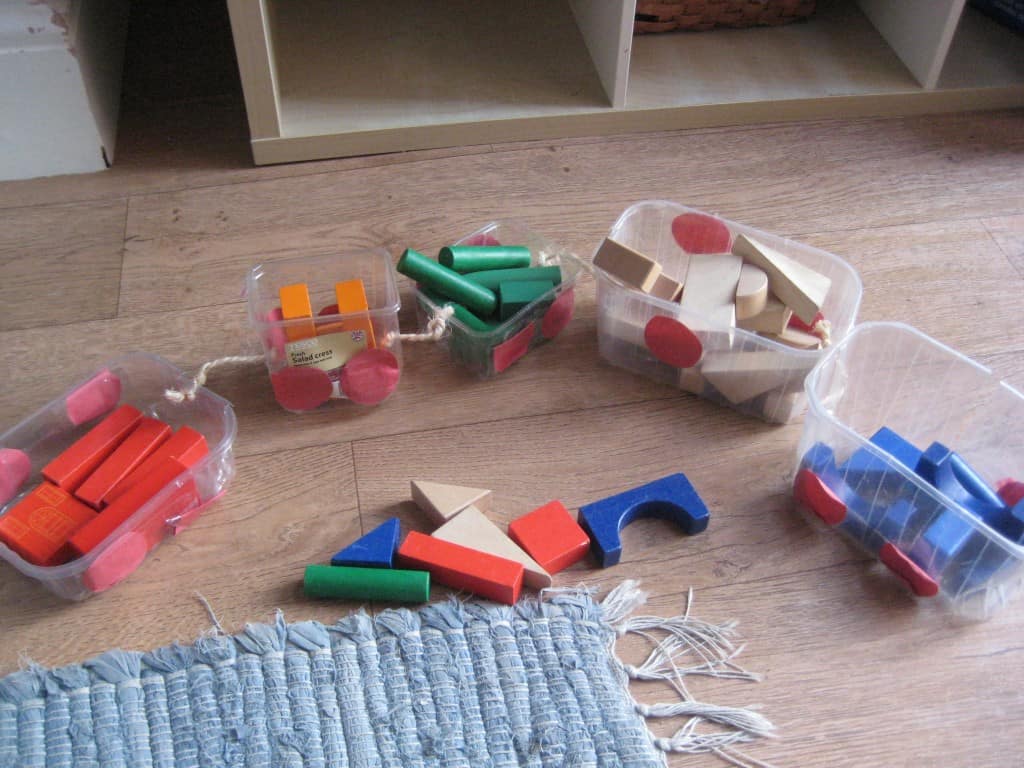
I’ve seen lots of lovely train sets available in shops but my daughter specifically wanted one which had open carriages so she could take her toys for a ride, so we made our own. We used plastic box containers from the recycling bin for the carriages and attached them together with string – very simple, but just what she wanted. She loaded the train with her toy passengers and played with the train in this way for a while. We have open shelving in the playroom to encourage the children to be creative and grab their own props when they’re playing, and today the wooden blocks were chosen. I asked my daughter if she could sort the blocks into the carriages by colour – which you can see she did. This classification ability – being able to sort objects into groups, be it by colour, size, purpose – is actually a pre-reading skill. It encourages logical thinking and helps to develop visual discrimination skills. Being able to look at a selection of objects and sort them is a step on the way to looking at a selection of letters and words and being able to read them. Of course, she was just having fun! Once the train was loaded she delivered the different coloured blocks to stations around the room.
We used the wooden blocks again for Idea Two. My daughter enjoyed using felt shapes to make a train picture yesterday, so I thought I’d make her a ‘matching puzzle‘ using our wooden blocks. On a piece of paper I lay out some blocks to make a train shape and drew round them. Then I coloured them in colours that matched our blocks.
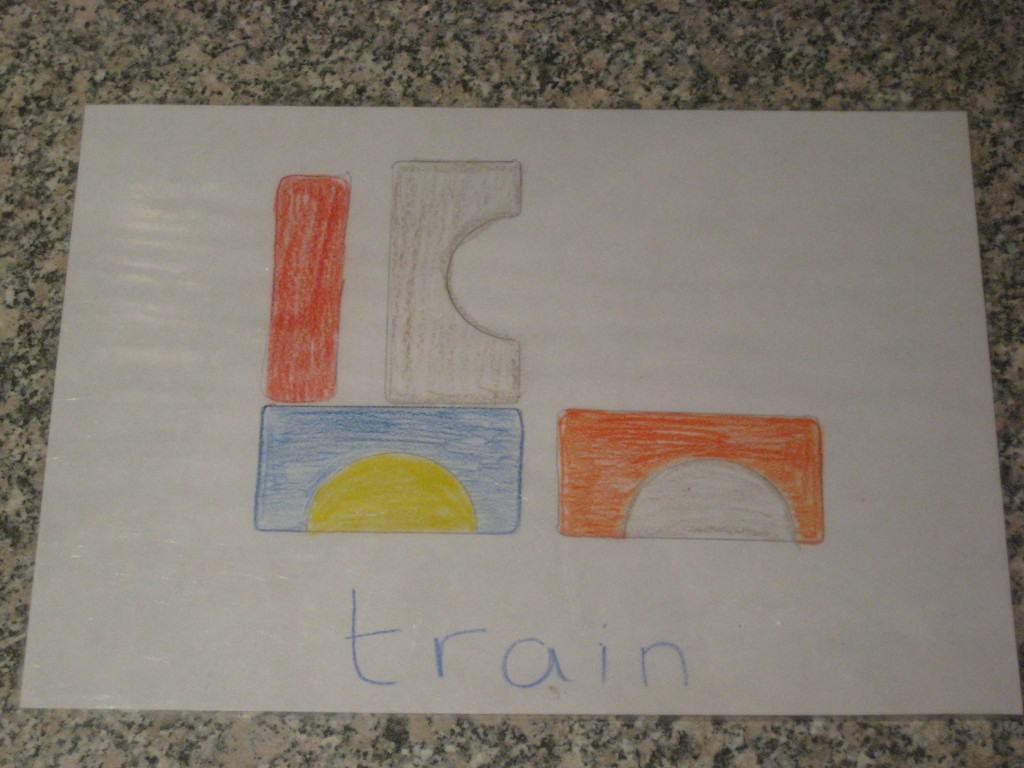
Then I asked my daughter if she could use the tub of blocks to find the right ones to go on top of the paper picture to make a block train.
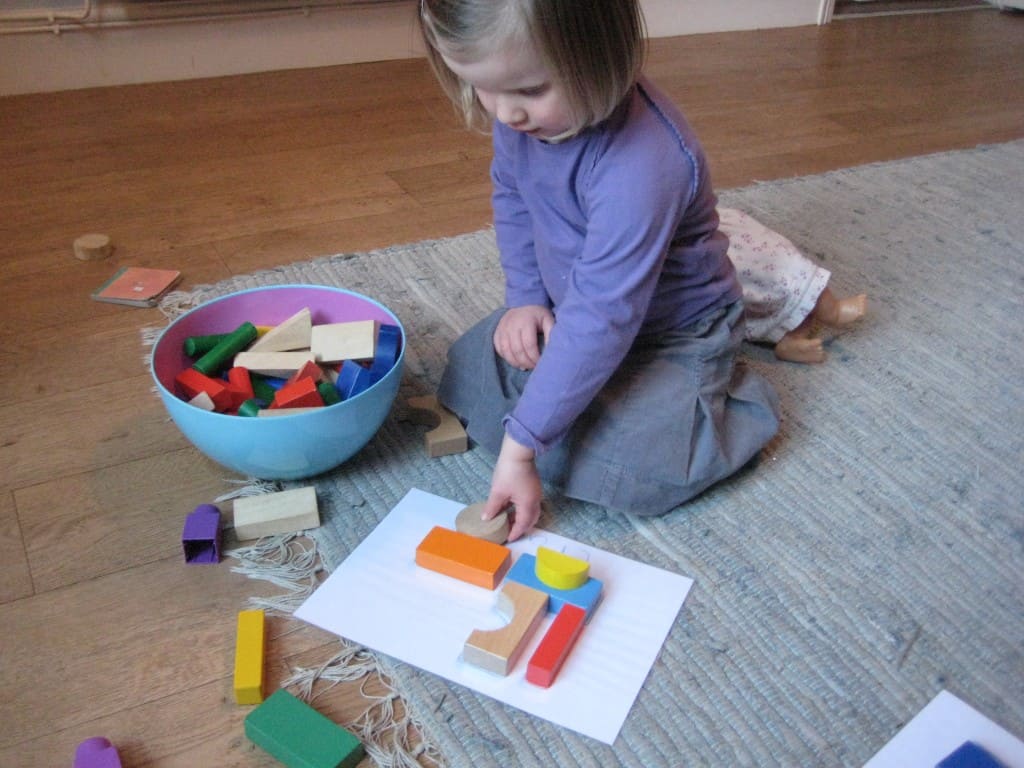
To do this she had to use lots of maths and pre-reading skills as she had to think about:
– their shape – rectangle or square?
– their size – big rectangle or small rectangle?
– their colour – red semi circle or yellow semi circle?
– their orientation – arch pointing left or right?
You could adapt this puzzle game to the shape of blocks you have and what your child likes. You might make a house picture, a face or even a random pattern. If your child enjoys jigsaws, whiy not give this a try?
- « Previous Page
- 1
- …
- 7
- 8
- 9
- 10
- Next Page »



